Art
The art of Uwe Max Jensen
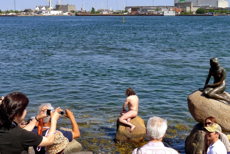
Some of Uwe Max Jensen's previous work includes his groundbreaking, self-explanatory piece titled, "For one complete week, I will only use the Aarhus Museum of Art when having a shit."
And there's also his 2005 piece titled "Raising the water level in a sculpture by Olafur Eliasson." This involved urinating in Eliasson's 'Waterfalls' sculpture.
[Copenhagen Post]
Posted By: Alex - Fri Apr 25, 2014 -
Comments (9)
Category: Art, Performance Art
Vegan Art
Austria-based artist Anamaria Finta went vegan two years ago. And for some reason that change inspired her to start making art out of her food.A lot of her art pieces seem to rely heavily on cream cheese and yogurt, both of which (last time I checked) aren't vegan. So I'm assuming she must use vegan substitutes for these.
So actually, I'm not sure what her art has to do with veganism at all. But it is nice food art. [via Today.com]



Posted By: Alex - Thu Apr 03, 2014 -
Comments (11)
Category: Art, Food
Art of the Insane
In early 1946, the St. Anne Insane Asylum in Paris exhibited some of the art work of its inmates. Collecting the art of people identified as insane seems to have been a trend at the time. See, for instance, the book of "Poetry of the Insane," published in 1933, that I posted about back in Feb 2013.The Associated Press caption on the top picture notes, "The writing is a miscellany of seemingly unconnected Gibberish, with no apparent relationship to the drawing."
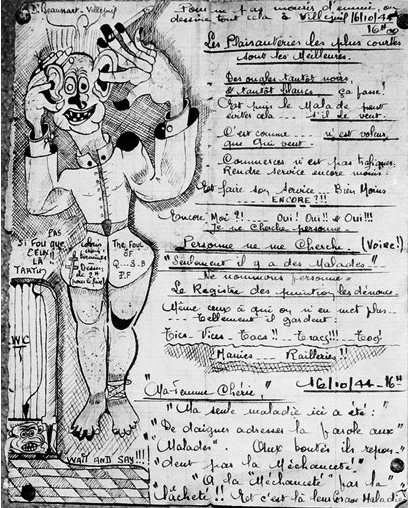
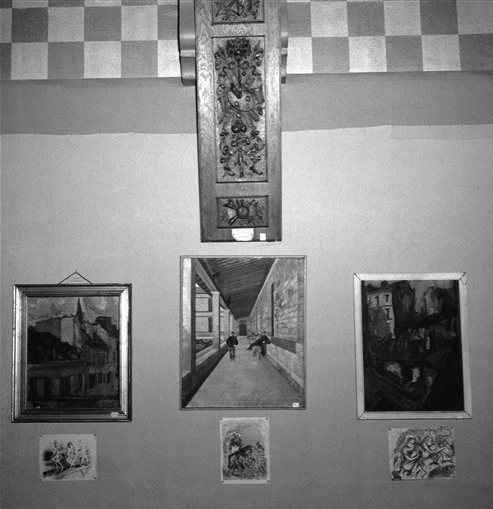
Posted By: Alex - Fri Mar 21, 2014 -
Comments (4)
Category: Art, 1940s, Mental Health and Insanity
Sculptures of Rosa Verloop
Dutch artist Rosa Verloop creates sculptures out of nylon stockings. She writes that she likes this material because it is "soft, cuddly, and easy to shape." Though when I look at her sculptures, 'cuddly' isn't the first word that comes to mind.
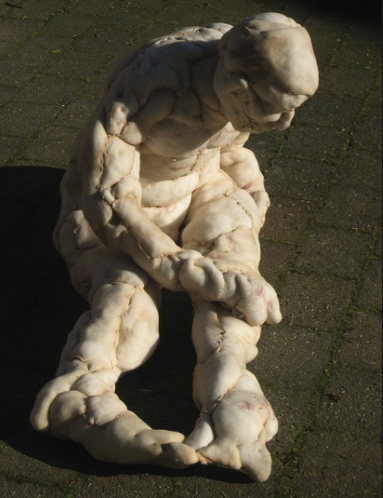

Posted By: Alex - Sat Mar 08, 2014 -
Comments (6)
Category: Art
Hand Embroidery


The hand embroidery art of Eliza Bennett. She explains on her site:
Posted By: Alex - Fri Feb 28, 2014 -
Comments (10)
Category: Art
The Art of Marilyn Monroe

There have been many, many paintings done of Marilyn Monroe. But I wasn't aware that Monroe was, herself, an artist. She contributed the above sketch, described as being in the surrealist style, to an art exhibit in 1956. The organizer of the exhibit praised Monroe as "a midget picasso." Source: Newsweek - Nov 19, 1956.
Posted By: Alex - Wed Feb 19, 2014 -
Comments (2)
Category: Art, Celebrities, 1950s
Pathogen Art
What some people will do for art! Anna Dumitriu is a UK artist who creates works of art out of clothing and textiles exposed to deadly pathogenic bacteria. However, she "takes pains to tell exhibition-goers that she kills all of the potentially-dangerous bacteria through heat sterilization" before putting it on display. In order to avoid infecting herself she does some of her work (the stuff that involves the most deadly pathogens) in a "custom-built biosecure container."Below is her VRSA Dress. It's been exposed to Vancomycin-resistant strains of the Staph bacteria. More details at smithsonianmag.com.
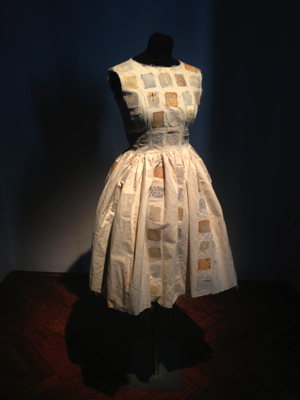
Posted By: Alex - Mon Feb 17, 2014 -
Comments (5)
Category: Art
Mystery Masterpiece
Who painted this masterpiece? See below in extended for the answer!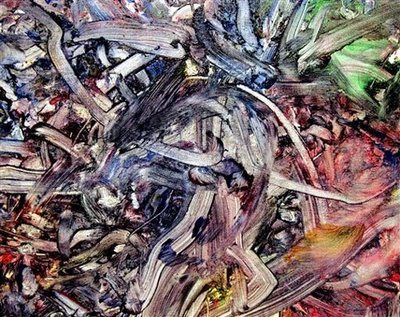
More in extended >>
Posted By: Alex - Thu Feb 06, 2014 -
Comments (6)
Category: Art
Stuffed Sheep Bedside Table
Twenty-one lucky people will get to have one of these in their bedroom, because that's how many the artist Oscar Tusquets made. Cost is $50,000 each. More info at the Daily Mail.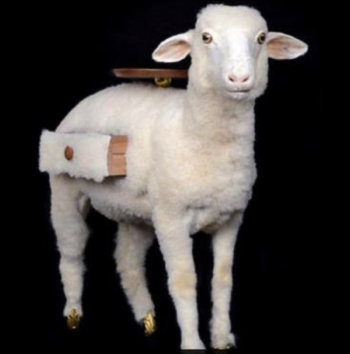
Posted By: Alex - Wed Feb 05, 2014 -
Comments (6)
Category: Art, Furniture
Necrorealism
The obscure Russian "Necrorealism" art movement, which emerged in the 1980s, doesn't even rate a page on Wikipedia. Based on the video below, it seems to have been an excuse for a bunch of Russian guys to make low-budget zombie movies in the forest. Though movies without a semblance of a plot.The "No New Enemies" site offers this explanation of Necrorealism:
Having got their hands on a lavishly illustrated forensic pathology textbook for inspiration, their initial output was comprised of photos of themselves in zombiesque make-up. Then followed performances... events that passersby or passengers were guaranteed to observe with horror. Later they began to use film as medium, and established an underground film studio.
Posted By: Alex - Fri Jan 31, 2014 -
Comments (6)
Category: Art, 1980s, Russia

| Who We Are |
|---|
| Alex Boese Alex is the creator and curator of the Museum of Hoaxes. He's also the author of various weird, non-fiction, science-themed books such as Elephants on Acid and Psychedelic Apes. Paul Di Filippo Paul has been paid to put weird ideas into fictional form for over thirty years, in his career as a noted science fiction writer. He has recently begun blogging on many curious topics with three fellow writers at The Inferior 4+1. Contact Us |




